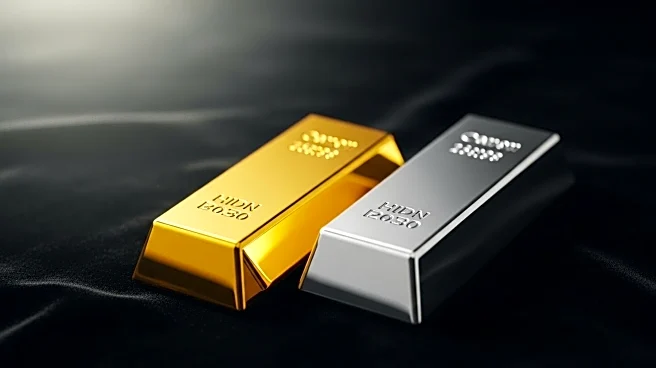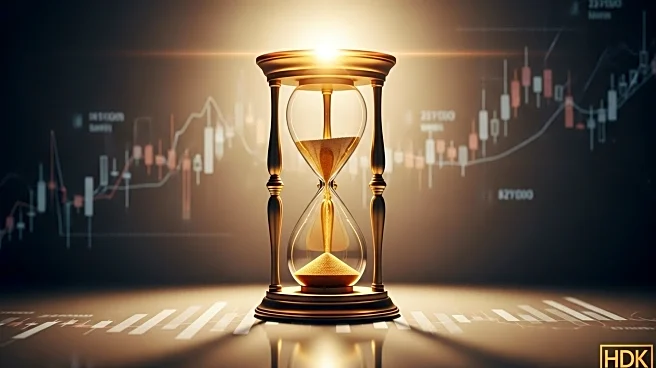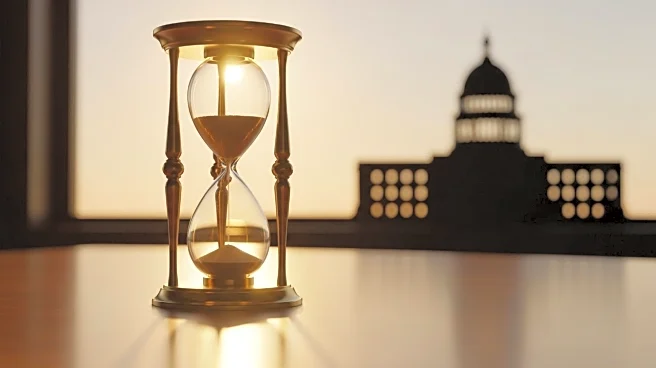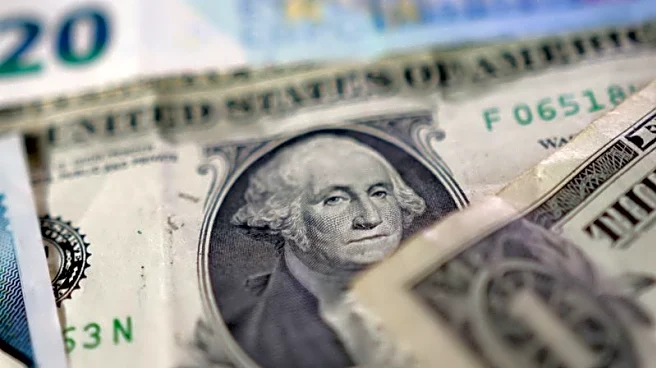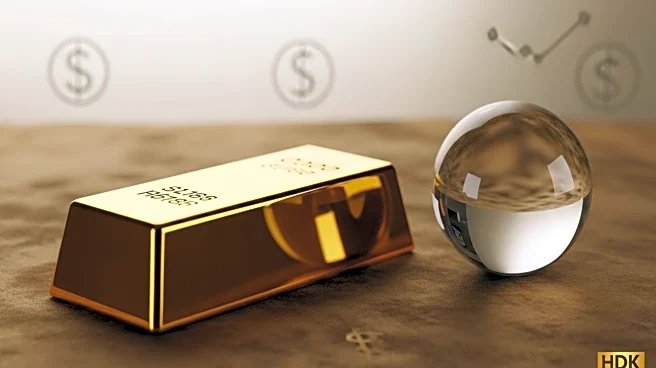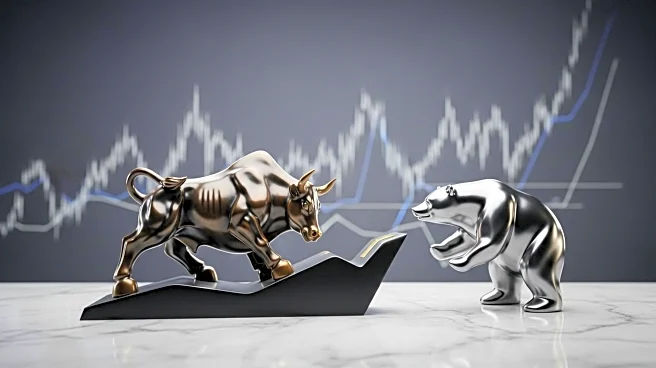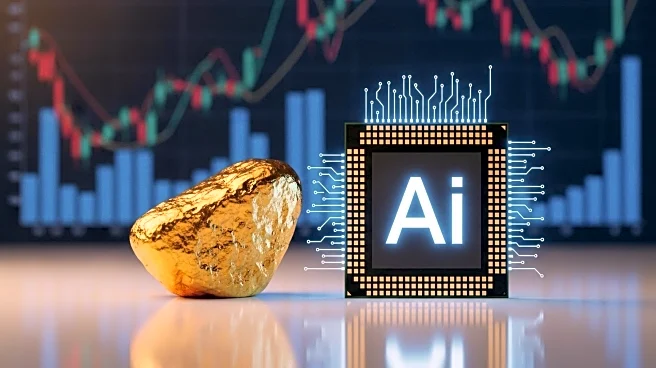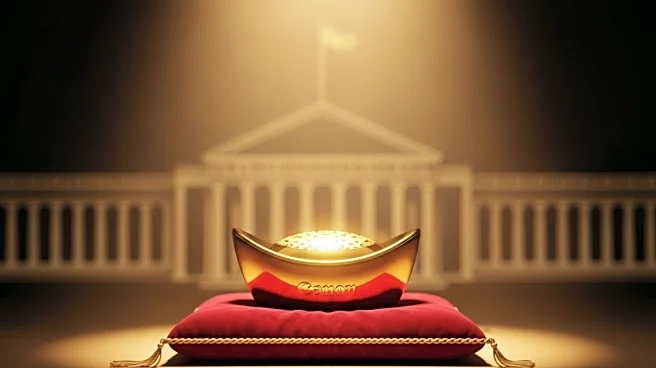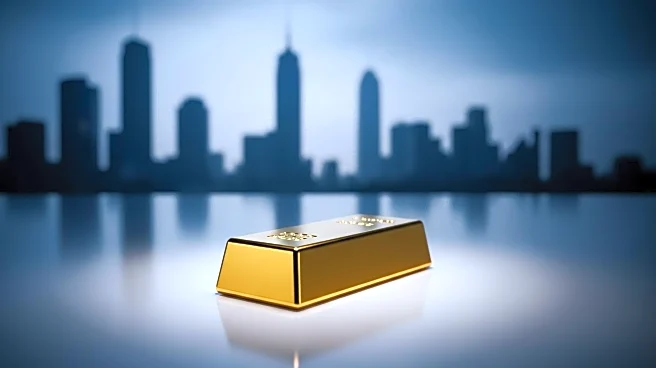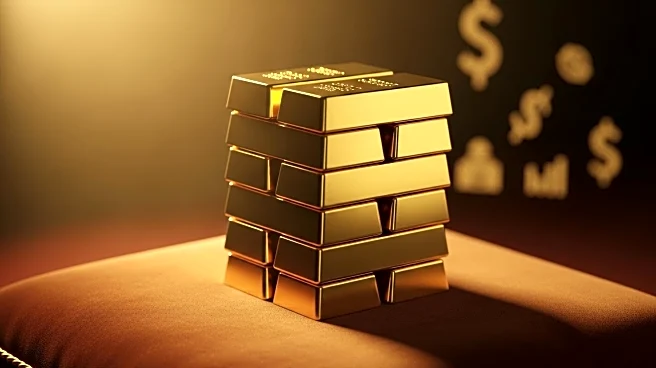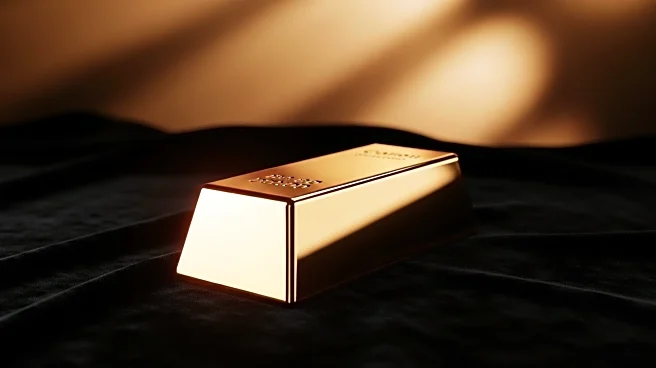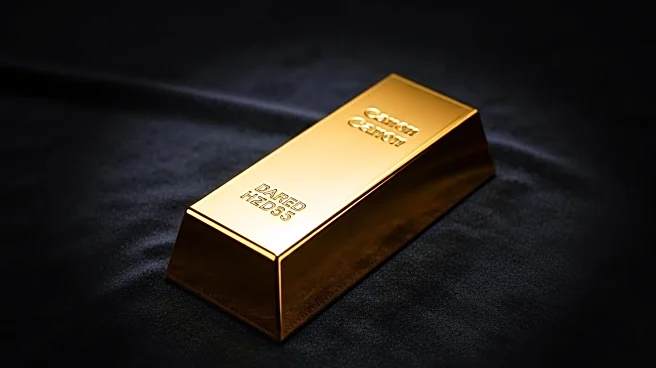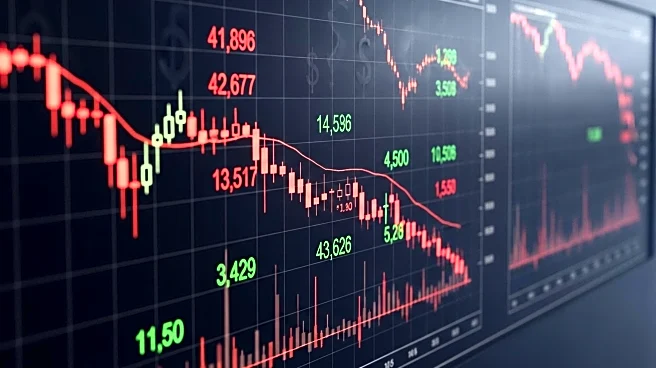What is the story about?
What's Happening?
Precious metals, particularly gold and silver, have seen significant price increases as investors seek safe-haven assets amid a U.S. government shutdown and expectations of Federal Reserve rate cuts. Gold prices have surged to near-record highs, reaching approximately $3,889 per ounce, marking a 47% increase year-to-date. Silver has also climbed to its highest level since 2011, nearing $50 per ounce. The ongoing government shutdown, now in its third day, has delayed crucial economic data releases, including the jobs report, leading investors to rely on alternative indicators that suggest a cooling economy. This uncertainty has heightened expectations for imminent rate cuts by the Federal Reserve, with markets pricing in a 95% probability of a 0.25% rate cut in October.
Why It's Important?
The surge in precious metals prices reflects broader economic and political uncertainties impacting the U.S. economy. The government shutdown has created a data vacuum, increasing market volatility and driving investors towards non-yielding assets like gold and silver. The anticipation of Federal Reserve rate cuts is significant as it suggests a shift towards monetary easing, which typically benefits precious metals by reducing the opportunity cost of holding them. This scenario is particularly favorable for gold, which thrives in lower interest rate environments. The situation underscores the fragility of the current economic landscape, with potential implications for inflation, currency valuation, and investor confidence.
What's Next?
As the government shutdown continues, the lack of economic data may further influence market expectations and investor behavior. The Federal Reserve's upcoming meeting in October will be closely watched for any decisions on interest rate adjustments. A rate cut could further boost precious metals, while any delay or hesitation might lead to market corrections. Additionally, geopolitical tensions and central bank policies will continue to play a role in shaping the economic outlook and influencing precious metals demand.
Beyond the Headlines
The current economic and political climate highlights the role of precious metals as a hedge against uncertainty and inflation. The increased demand for gold and silver also reflects broader concerns about the stability of fiat currencies and the potential for stagflation—a combination of stagnant economic growth and high inflation. Central banks' continued accumulation of gold reserves further emphasizes the strategic importance of these assets in times of geopolitical tension and economic instability.
AI Generated Content
Do you find this article useful?
